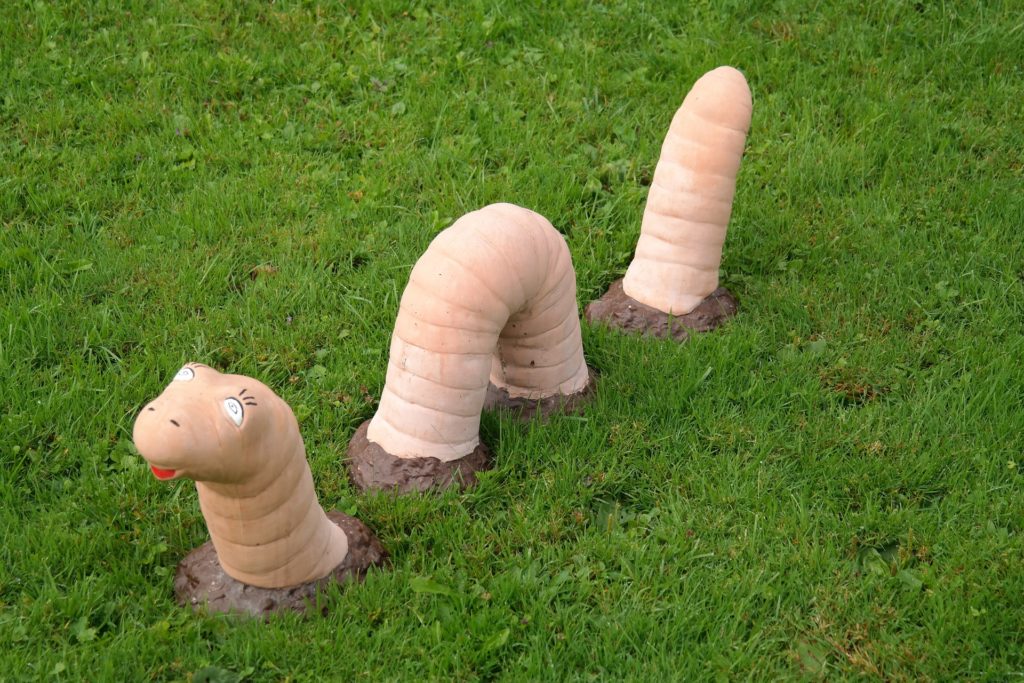
Pacman frogs do eat earthworms, that is a well-known fact. However, the right question would be “What earthworms?”
Not All the Worms Are Created Equal
To simplify the classification, let’s divide the worms not scientifically, but according to the purpose of this article: feeding the Pacman frogs.
These two types in the United States are commonly called “night crawlers” and “red wigglers”.
The Nigth Crawlers are Good
Night crawlers (Lumbricus terrestris) is a large, reddish worm species thought to be native to Western Europe, now widely distributed around the world (along with several other lumbricids).
The Red Wigglers Are Not So Good
A red wiggler, or Eisenia fetida, is an earthworm known under various common names such as manure worm, redworm, brandling worm, trout worm, tiger worm, or panfish worm. Being morphologically similar with night crawlers, red wigglers are completely different beasts. They armed with an effective biological weapon: their cells secrete lysenin, pore-forming toxin. When a predator swallows the worm, these toxins can damage the predator’s digestive tract, causing various unpredictable complications.
Obviously, our pacmans who are well-known for being relatively fragile species and true drama queens, won’t appreciate the diet that includes red wigglers.
While we did not hesitate to offer night crawlers to our frog, not so long ago things suddenly got worse.
One day, after consuming 3 decent worms from one of the common chain stores (they sell it as a fish bait), our frog stopped to eat for a week. Well, they do that from time and it is considered normal, but then another 3 days. And the fourth one. Such a pause is not normal for a juvenile, fast-growing frog.
To prevent the worst-case scenario, we took the measures and asked for a professional veterinarian help (thank you, local PetCo store!). They took the frog, put it into quarantine and run a series of tests to see what is going on.
Honestly, we were surprised by the attention they have demonstrated! 4 days later, they gave us a call. The lady had explained that all the tests were in range, and there were no symptoms of any kind of disease at all, but the frog is refusing to eat for some reason. They asked if they can hold it a couple more days to get a better understanding of what is going on.
2 more days have gone, and another call told us that “yes, he finally started eating and took two mealworms at a time”. Most likely we will be able to get it back at the beginning of the next week.
The reason? Still unknown. The veterinarian said that there is a possibility that the worms from the chain store are to blame, but he can’t confirm that. There is a chance that those particular worms were bred in the contaminated soil. While it is absolutely acceptable for a fish bite, it doesn’t sound good if we are talking about the frog’s food.
On the other side, there are many shreds of evidence that Walmart worms and bait shop crickets are not bad, and many owners are using them for their frogs without any problems.
And remember: you must use only the night crawlers. No red wiggles, ever!
